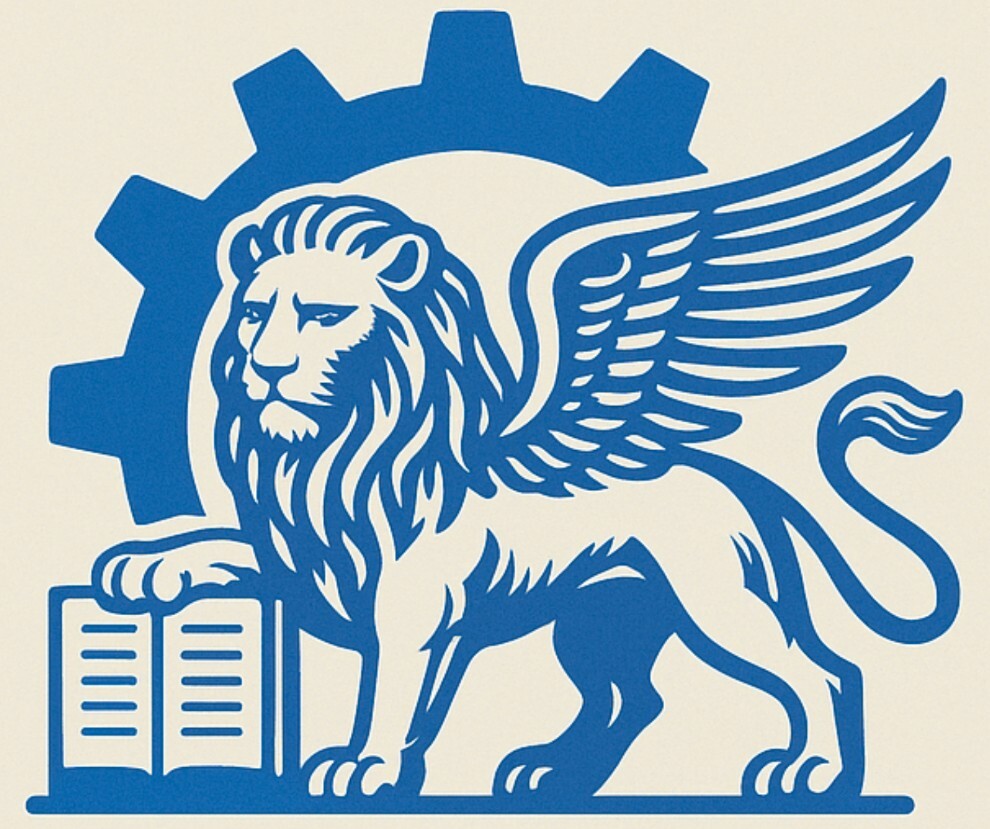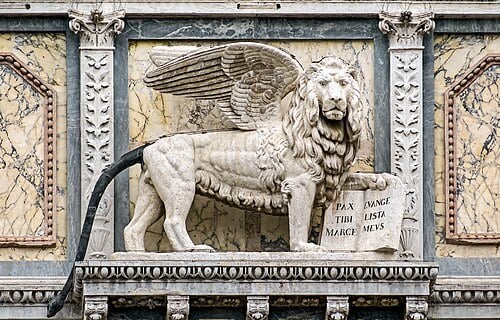
Industry Arsenal
Why Industry Arsenal?
At Industry Arsenal, our name isn't just a catchy phrase, it's a deliberate nod to history and innovation.
The vision of this website is to transform our platform as a modern "arsenal" for the industrial world: a comprehensive hub stocked with tools, insights and resources to empower professionals, businesses, and innovators in manufacturing.
But why "Arsenal" and why draw from Venice? It all ties back to the etymology of the word and the remarkable story of the Venetian Arsenal, which inspired both our name and our logo, the iconic Lion of Saint Mark.

The Venetian Arsenal, 1797, by Gianmaria Maffioletti

The Winged Lion of St Mark at the Scuola Grande di San Marco, Venice
Etymology
“Arsenal" has a rich linguistic journey that reflects its evolution from a place of creation to one of storage and power.
It originates from the Arabic phrase "dār al-ṣināʿa," meaning "house of industry" or "house of manufacture".
This term entered European languages through Italian "arsenale" influenced by the Venetian dialect, as Venice's own shipbuilding complex became synonymous with the concept.
By the 16th century, it had made its way into English, initially denoting a dockyard or workshop for building ships, before shifting in meaning to a storehouse for weapons and military supplies.
The Venetian Arsenal: The Beating Heart of a Maritime Empire
While the Republic of Venice is often celebrated for its breathtaking art and astute merchants, few realize that its dominance in Mediterranean trade hinged on unparalleled industrial might.
At the epicenter of this power stood the Venetian Arsenal, a sprawling industrial complex that preceded the Industrial Revolution by centuries!
Established around 1104 A.D during Venice's republican era, the Arsenal began as a modest shipyard but grew into the largest pre-industrial production facility in the world, covering over 110 acres and employing up to 16,000 workers at its peak.
It pioneered assembly-line techniques, standardizing parts and processes to churn out galleys at astonishing speeds, famously producing a fully equipped warship every single day.
Workers specialized in roles like carpentry, rope-making, and cannon forging, supported by on-site warehouses, forges, and even a dedicated forest in the Alps for timber supply.
The Arsenal's efficiency enabled Venice to maintain a formidable navy, securing trade routes and defending against rivals like the Ottoman Empire.
Dante Alighieri even immortalized its fiery forges and bustling energy in his Inferno, likening hell's torments to the Arsenal's tar-boiling cauldrons.
By the 15th century, it symbolized Venice's blend of ingenuity and power, transforming the city-state into a global superpower.